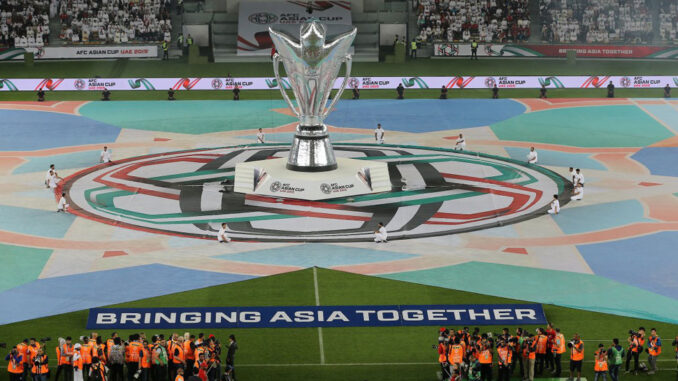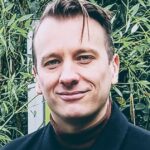
It’s been over 16 months since we last had regular competitive international football across the whole of Asia.
With this month’s World Cup qualification round of matches hit again by the disruption of a global pandemic, discussion of where Asian international football should go next once more rears its head.
With a mixture of high profile friendlies, regional get-togethers, sporadic qualifiers and complete stagnation, consistency and development across the continent as a whole are top of the bill in terms of requirements. But would the highly sought after Nations League concept, introduced so successfully in Europe, be as effective if adopted in Asia?
As a general consensus, the idea of a Nations League is broadly welcomed across Asia. The premise of which is to eradicate “meaningless” friendlies, with structured, competitive matches that both assist smaller nations in organising such matchups, but also allowing them to compete against similarly ranked nations is a sound one.
The need from Europe was perpetuated by both big and small nations alike; elite nations (and the club sides that supplied them) were tired of long drawn out qualifying stages, supplemented by similarly undesirable friendly encounters, while smaller sides were continuing to lag behind, losing match after match in qualification, and losing impetus in facilitating friendlies around it.
The shift to a third international tournament (in addition to the World Cup and Euros) engineered very much what it was designed for; elite sides competed for extra silverware against similarly ranked teams – generating worthwhile development and exposure ($$$); smaller sides contested for “promotion” with an added chance of Euros qualification in matches they could realistically succeed in and develop from.
The big difference when it comes to Asia is the levels of teams within it, and where they sit both in their continental and global pyramids.
Elite teams in Asia, while similarly comforted by a significant chance of regular World Cup qualification, continue to lag behind the world’s top nations, while those from “Developing” and “Aspiring” nations (coined by the AFC over a decade ago) have more difficulty in merely organising friendlies, or the very least with those from outside their local regions.
With this in mind, and given the back-loaded international calendar with World Cup and Asian Cup competitions scheduled at the end of the AFC cycle; the AFC’s revised joint World Cup/Asian Cup qualification process that was revamped in 2015, a holistic approach which has focused on regular competitive football and mixing levels of teams throughout it, has sought to remedy some of these ill effects.
For developing nations; a chance to compete against the very best in Asia in the second round of World Cup qualifying is followed by a more comparable Asian Cup qualifying (third round) format, that spreads the load on competition while finding the balance of competitiveness and high end experience.
On the other footing; elite Asian nations are afforded a slower integration in qualification, more matches essentially for experimentation, followed by a highly competitive build up in the third and final round of World Cup qualification.
We’ve already seen the earliest beneficiaries from this change in format.
The rapid improvements of previously sidelined nations such as Bhutan, who went through the WC2018 cycle from being battered by Qatar and China earlier in qualification, to beating Bangladesh and competing handsomely with likes of Oman (4-2 reverse in 2017) illustrated how simple regular, competitive exposure can drive forward change.
Bhutan’s schedule across the cycle was underpinned by its variance. Taking in Sri Lanka, Hong Kong, China, Qatar, Maldives, Bangladesh, Palestine and Oman, they were subjected to the full range of opponents and cultures that Asia can offer; something that had rarely happened before.
Embed from Getty ImagesThe deficiency in the system is stark however, highlighted by the severe annexing of those who fail at the preliminary qualification stage for Round 2 access.
For the likes of Brunei, Macao, Laos, Pakistan, East Timor and brutally Bhutan themselves this cycle, a simple two-legged defeat can reverse any progression in development that had been gained the full cycle beforehand.
Without investment in friendlies, these teams are cast adrift for nearly four years without any sign of competitive football. While this is a clear omission in the AFC qualification plan that critically needs to be addressed – ideally by merging these teams directly into the effective qualification stage proper – this does only represent six of the 49 nations in the confederation.
The concept of friendlies in Asia is also a differing one to that of the rest of the world. World Cup qualification starts much earlier than any other continent; two months out of the previous cycle in many cases, and stretches to the latest date afforded by FIFA.
“Free” game weeks are hard to come by; four whole match slots, in fact, of inaction for all nations. This would make any widespread organisation of a third international tournament difficult to integrate into an already full calendar.
The gaps either side of the cycle; are either build-up preparation for the Asian Cup (directly following the World Cup), or build up preparation for the next World Cup, neither again seem suitable for all teams to be present.
Finding a balance, that arguably the revamped qualification stage has brought to all, has been and will continue to be incredibly difficult to please everyone.
Unlike in Europe; regional tournaments are significant and are regularly organised outside of FIFA international windows. This remains a worthwhile format for developing nations.
Another past solution was the running of developmental competitions such as the AFC President’s Cup and the AFC Challenge Cup; both looking to build up experience of hosts and teams at the lower end of the rankings who had missed out on World/Asian Cup qualification pre-format change in 2011.
This was partially revived in the form of the AFC Solidarity Cup last cycle, but again this would be proven a defunct idea if Round 1 was merged from the start of the process.
These tournaments did show, however, how tailored planning and fine needs assessments of each nation, and subset of nations, is required to see progression take hold.
Of the minority that have warned against a Nations League in Asia; many hail from the those elite Asian countries, who wish to continue in enticing elite friendlies from within the continent and from overseas.
For every case of Iran, a side who have regularly been unsupported by their Football Federation in looking for these opportunities; you have the likes of Japan and South Korea who continue to look inwardly at hosting lucrative friendlies on their own shores, rather than towards Europe, the Americas or Africa.
It may seem flippant, but the developmental potential of travelling to face Algeria, for example, would far outweigh the hosting of any B-grade Peru for extra Kirin Cup dollars, surely?
The bolt from the blue this time around has been Qatar. Granted their hosting of the World Cup next year has enabled their progress in this regard; however the Maroon continue to blaze a trail for Asian teams going to Europe.
Their trip to Europe in November 2018 where they faced Switzerland and Iceland has since been hailed as the foundation behind their Asian Cup triumph two months later.
This month, Qatar have set up home in Hungary ahead of friendlies against Luxembourg, Republic of Ireland and Azerbaijan. Varied, competitive opposition in unfamiliar surroundings; perfect preparatory groundwork for an upcoming World Cup debut.
It’s been replicated only briefly by the other big guns in Asia; but if the competitive gap is to be closed any time soon, it’ll need to be explored further.
Without support from the AFC, Asia looks to lose further ground to the likes of North America and Africa who have tended to embrace this route more in recent years.
For the other end of the spectrum, experiences vary. For every Bhutan, Philippines or Kyrgyzstan, who have seen their development blossom of late, there’s the likes of Bangladesh, Laos and Palestine, who have either struggled with making the right strides or continue to be left limping, by unsupportive football associations.
While a structured Nations League would initially look to enable consistency across the continent; the same ills will persist without targeted intervention.
Regional associations continue to hold significant influence in Asia; looking to harness and regulate their tournaments underneath the umbrella of the AFC may well be the best way of focussing to the various needs across Asia.
The very idea of throwing an extra competitive tournament on the face of it increases competitive play, development as a whole is a much more difficult proposition to ignite.
Given the magnitude of COVID has once again had a larger impact on Asia’s vast logistical nightmare than any other; whispers persist that the AFC may well be better off split up going forward.
Following on from the considerable success of their revamped qualification cycle however, a more nuanced approach from the AFC may well be the best route forward to building a closer more competitive Asia in the future.




